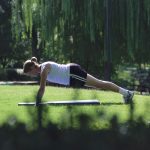
Daily exercise may be the ideal, but even weekend workouts might prolong your life, a new study suggests. In a study of more than 3,400 men and women over age 40, researchers found those who exercised one or two days a week had the same low death rates as those who exercised more frequently. “One of the main concerns to increasing physical activity is limited time, particularly multiple days a week,” said lead researcher Eric Shiroma. He’s a staff scientist and epidemiologist at the U.S. National Institute on Aging. At the study’s start, participants wore activity monitors for a week. The researchers classified them as “weekend warriors” if they exercised only one or two days a week, or as regularly active folks who spread their exercise out over the week. All were tracked for about six years. Although the regular exercisers had about 50% more moderate and vigorous workouts than the weekend exercisers, the health benefits were similar. “We found that weekend warriors had a similar mortality benefit compared to more frequent exercisers,” Shiroma said. The weekend warriors had health benefits similar to those who met goals set out in the Physical Activity Guidelines for Americans — at least 150 to 300 minutes of moderate-to-vigorous activity a week, he said. However, this study can’t prove that it was exercise that reduced death rates, said Dr.… read on >


































